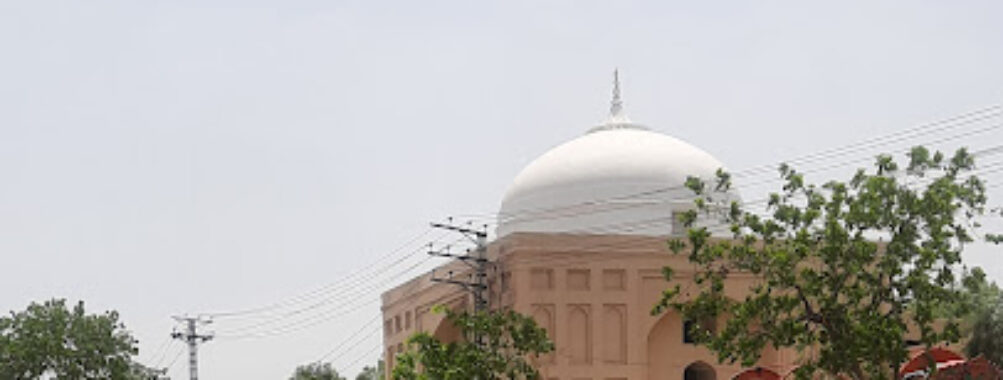
Kasur Museum
Table of Contents
Description
The Kasur Museum is a compact but thoughtfully organized history museum in the Kasur district of Punjab that quietly tells the story of the city and its surrounding region. It focuses on local cultural history, archaeological finds, and the everyday artifacts that often get overlooked in bigger national museums. Rather than blaring broad national narratives, the museum gently unpacks Kasur’s past: coins and pottery from different periods, photographic panels about colonial and post-colonial life, and interpretive displays that point to Mughal-era influences as well as later British-era changes. For travelers curious about roots and rhythms of south Punjab life, it’s an unexpectedly rich stop.
It’s not a massive institution. The place favors depth over scale — small galleries with carefully labeled items, rather than cavernous halls filled with anonymous objects. That makes it ideal for a focused one-hour visit, or longer if someone likes to read every caption (and yes, some people do). The collection highlights include numismatic displays that trace local trade and governance, pottery shards and ceramics that hint at daily life across centuries, and a selection of photographs and documents that bring Kasur’s social history into sharper, human-scale focus. There are also panels and displays that reference nearby cultural touchstones, such as the poetic legacy of Bulleh Shah and other regional figures, which helps situate the town in the broader cultural map of Punjab.
The museum’s tone is practical and educational. It leans on clear labels and straightforward timelines, not on gimmicks. But it does manage to be warm — there’s a local curatorial voice in evidence, meaning displays sometimes include oral-history snippets or community-donated items with short backstories. Visitors often appreciate that grounding: you can see, for example, a household object or a fragment of textile and learn who donated it and why it mattered to their family. That sort of thing gives the museum personality without trying too hard to perform.
Accessibility has been given proper attention. The entrance is wheelchair accessible and there is a wheelchair-accessible parking lot, which makes arrival and movement easier for people with mobility needs. Families with small children will find the place welcoming; it is officially marked as good for kids and many exhibits are displayed at a height that younger visitors can engage with. Do note that there is no on-site restaurant, so plan accordingly — bring water and snacks if needed, because the nearest cafés may require a short walk or brief drive.
Now, a little aside from the author: on a grey afternoon visit, they wandered through a gallery dedicated to everyday objects and found themselves oddly moved by a worn teapot on display. It was nothing glamorous, but the accompanying note explained it had been used in a household that had sent it to the museum after migration. For a moment the museum felt like a quiet listener, collecting ordinary lives and making them legible. That kind of intimacy is what sets Kasur Museum apart for many visitors.
There are practical trade-offs. Some sections show their age in the materials and lighting; display cases could use occasional updates and a few labels might be clearer or more detailed in English for foreign visitors. But the curators are clearly trying to present a balanced portrait: the museum does not shy away from complicated histories, including shifts during different periods — Mughal-era influences, British administrative changes and the social transformations of the 20th century. Interpretive notes try to be honest and layered, not simply celebratory, which travelers who like nuance will appreciate.
For people coming from Lahore or other nearby cities, the museum offers a manageable cultural detour that complements visits to larger regional attractions. It works especially well in an itinerary that includes Kasur’s shrines, local markets, or a day exploring the countryside along the Ravi and Sutlej river areas. Visitors who enjoy small museums — the kind that reward curiosity and slow wandering — will likely enjoy Kasur Museum more than those expecting blockbuster exhibitions or major archaeological treasures.
Educational programming and temporary exhibits pop up from time to time, often timed with local cultural events or school visits. If one wants to catch something special, it’s worth asking museum staff about rotating displays or community events when planning a visit. The staff tend to be helpful and proud of the collection, happy to point out lesser-known items or share local stories. And if you love photography, carry a small camera: the building’s modest architecture and the way light plays on certain cases makes for pleasant, low-key shots — nothing staged, just real museum atmosphere.
Ultimately, the Kasur Museum is a place that rewards curiosity and a slower travel pace. It’s not about top-ten lists or Instagram-ready wow moments. Instead, it offers context — fragments of history assembled into a story of place, people, and memory. For travelers who want to understand Kasur beyond a headline, who enjoy small-scale museums with personality and local ties, this museum provides a solid, sincere introduction to the region’s history and cultural threads.
Location
Places to Stay Near Kasur Museum
Find and Book a Tour
Explore More Travel Guides
No reviews found! Be the first to review!